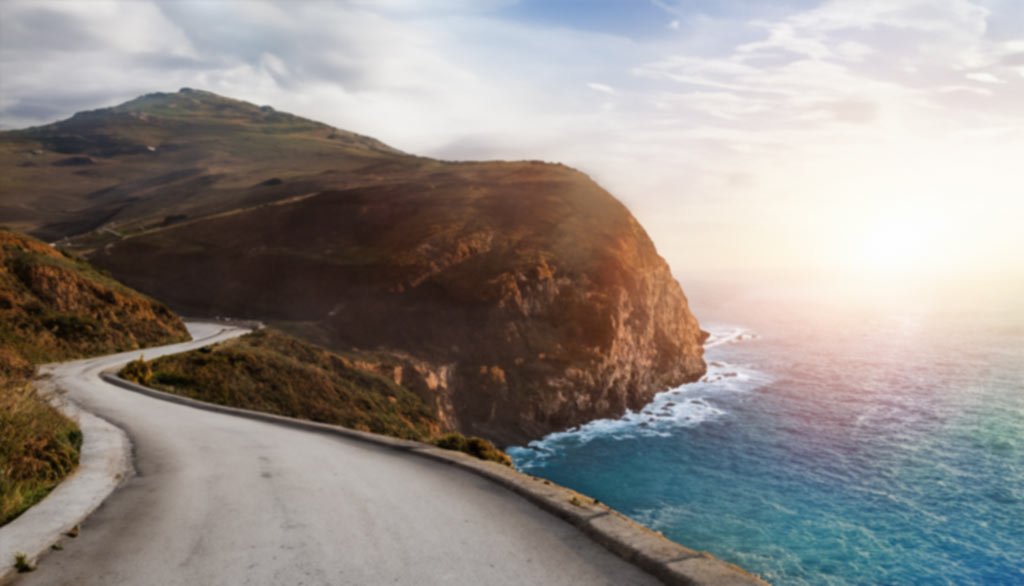Crete is a secure and flexible travel destination, particularly suitable for solo travelers throughout the year. Crete remains a safe destination for solo travelers, supported by cultural awareness, smart planning, and centralized accommodations that reduce isolation risks. The island offers safety-focused solo travel tips that enhance personal security while exploring. Centrally located and well-reviewed lodgings enable easy access to public areas, minimizing night-time walking risks.
Following the wildfires on July 3rd, 2025, in Southeast Crete (Ierapetra and Achlia), tourist zones remain unaffected and accessible, reaffirming Crete’s travel safety. Crete continues to be a protected travel zone after the July 2025 wildfires. Despite several earthquakes, including a magnitude 6.1 event in May and July 2025, Crete remains structurally stable and safe for visitors. Crete retains its status as a reliable destination for solo travel, offering all-year accessibility and infrastructure resilience.
Solo exploration of Crete is supported by independent transport options, such as public buses or private rentals, allowing flexible island mobility. Solo travelers frequently select car rentals for greater freedom when navigating the island. Solo-focused activities in Crete – like hiking, sightseeing, swimming, and cultural discovery – make it a fulfilling and protected choice. The welcoming nature of Cretan culture, deeply rooted in hospitality, supports solo visitors. Authentic cultural experiences are easily accessible through daily activities, even when traveling alone. Crete offers travel options that accommodate both budget-conscious and luxury-oriented solo travelers.
Is It Safe to Travel Alone to Crete?
Crete is a safe and flexible travel destination for solo visitors throughout the year. The island encourages independent exploration with diverse activities such as hiking, sightseeing, beach visits, and cultural tours to historical monasteries and museums. Cities like Chania and Heraklion are particularly accommodating to LGBTQ+ travelers and independent tourists in general, offering walkable neighborhoods, friendly locals, and accessible services. Public buses serve most major routes, while renting a car allows travelers to reach remote areas and explore at their own pace. Solo visitors can choose between affordable and premium options, making Crete ideal for both budget solo travelers and luxury solo travelers. Local hospitality, low crime rates, and year-round attractions contribute to a secure and rewarding experience. Solo travelers can conveniently explore the island thanks to its reliable infrastructure, while enjoying cultural openness and opportunities for both structured and spontaneous adventures.

Is Crete safe to travel after the July 2025 wildfires?
Yes, Crete is safe to travel after the wildfires of July 3rd 2025 in Southeast Crete (Ierapetra and Achlia), as tourist zones remain intact and fully accessible. Emergency crews have controlled affected areas, restored normal operations, and reopened infrastructure. Key attractions, accommodations, and coastal routes continue to operate without disruption. Visitors should stay informed via local updates and official channels.
Southeast Crete near Ierapetra experienced major fires in early July 2025. Authorities evacuated thousands from settlements, and fires damaged homes and hotels. No tourists were injured or killed. By mid-July, fire fronts were contained, and travelers returned to unaffected areas.
Wildfire-affected regions including Ierapetra and Achlia remain restricted. Damaged roads and infrastructure limit access. Flights to Chania and Heraklion and ferries continue to operate normally to unaffected parts of the island.
Authorities issued a very high fire danger warning for August 7 2025 and the following days. Gale-force winds and dry heat increase the risk of new fires. Emergency services remain on “Red Code” alert.
Evacuated tourists have returned to accommodations or were relocated within the island. Main tourist infrastructure continues to function outside impacted zones.
Travelers must avoid affected areas and follow official evacuation instructions. Travelers should carry masks (N95/FFP2), light clothing, water, first aid supplies, and backup identification. Fire-related disruptions may change travel plans.
Most travel insurance policies include coverage for wildfire impacts. UK and other national travel advisories do not prohibit travel to Crete but recommend awareness of ongoing risks.
Is Crete safe to travel after the earthquakes?
Yes, Crete is safe for travel after the recent earthquakes. Local authorities have confirmed structural assessments and emergency protocols are in place. Essential services, airports, and major tourist areas continue normal operations. Travellers are advised to monitor official updates and follow local safety instructions during their stay.
Crete experienced several earthquakes in May and July 2025, including one of magnitude 6.1. These quakes triggered tsunami alerts and caused minor damage, including landslides and superficial building issues around Heraklion. No major injuries or fatalities occurred. The European-Mediterranean Seismological Centre confirmed that seismic activity remains within historical norms. Tourist operations continue across the island. Local authorities advise tourists to understand earthquake procedures and follow instructions.
Foreign governments have issued no major travel warnings. Tourist infrastructure remains fully operational. Travelers must avoid beaches and ports immediately after strong earthquakes due to short-term whirlpool or sea level risks. Coastal safety instructions from authorities must be followed without delay.
What solo activities does Crete offer?
The solo activities offered in Crete include hiking, sightseeing, swimming, and cultural visits, making the island an excellent destination for travelers exploring on their own. The top things to do alone in Crete include visiting historical sites, walking through old towns, touring monasteries, and exploring local museums. Solo travelers often spend time in Heraklion, Chania, and Rethymno, where public transportation is reliable and walking routes are well-marked. Crete has several beaches ideal for independent sojourners, such as Falasarna, Elafonissi, and Matala. These beaches have organized facilities, lifeguards, and nearby cafés, making independent travelers feel safe while enjoying the beauty of nature.
The best activities for solo female travelers in Crete include guided food tours, shopping in local markets, and visiting cultural landmarks during daylight hours. Women traveling alone often choose daytime excursions and stick to well-populated areas with regular bus routes, while adventurous solo travelers often hike the Samaria Gorge, swim in Seitan Limania, or snorkel in Marathi Bay. These outdoor options provide active experiences without requiring a companion, especially during the spring and summer months when group tours are available. Independent solo travelers benefit from Crete’s self-paced sightseeing at archaeological sites, long drives through the southern coast, or coastal walks in Chania and Agios Nikolaos. Crete’s combination of historical interest, natural beauty, and local hospitality makes solo travel both flexible and secure.
Is traveling in Crete easy for solo travelers?
Yes, traveling in Crete is certainly easy for solo travelers. The island has multiple transportation options, including buses, taxis, car rentals, and boats between ports. The public bus system connects most major cities and villages, with schedules posted at stations and online. Solo tourists can navigate easily by using KTEL buses, which are affordable and reliable for routes between Heraklion, Chania, Rethymno, and other major towns.
Solo travelers wanting more freedom often choose a Crete car rental as the best transportation method. Driving allows full control over travel time, route, and pace. The road network across Crete is generally safe, and most road signs are in both Greek and English. Traveling alone by car gives access to remote beaches, mountain villages, and archaeological sites not reachable by bus. Car rental agencies in Crete offer compact vehicles that are easy to manage for solo drivers. Fuel stations are widely available, and GPS coverage is consistent across the island.
Travel by boat is also possible between coastal towns, especially during the summer season. Boat trips offer an alternative way to explore Crete’s coastline and nearby islands, with solo-friendly day cruises available from ports like Heraklion and Agios Nikolaos. Navigating transportation alone in Crete is straightforward, especially with access to digital maps, clear signage, and English-speaking locals in tourist areas. Whether using public buses or private cars, solo travelers can move independently and confidently across the island.
Can solo travelers enjoy Crete all year round?
Yes, solo travelers can absolutely enjoy Crete all year round. Each season offers activities that suit different travel preferences, making the island ideal for every type of spontaneous solo traveler. Spring, from March to May, is ideal for hiking gorges such as Samaria and Imbros, exploring botanical gardens, and visiting monasteries with fewer crowds. The weather ranges from 17°C to 24°C (63°F to 75°F), and wildflowers cover the countryside.
Summer, from June to early September, offers perfect conditions for beach days, swimming, and boat trips. Temperatures rise to 24°C to 30°C (75°F to 86°F), and solo travelers often visit beaches like Elafonissi, Vai, and Preveli. Day cruises and water sports are widely available and easy to join without a group.
Autumn, from mid-September to November, provides mild weather and fewer tourists. Solo visitors can tour museums, archaeological sites, and vineyards. Olive harvest season begins in late October, giving travelers a chance to witness local agricultural traditions.
Winter, from December to February, is quiet and reflective, making it an excellent time for cultural exploration. Independent travelers can stay in Heraklion or Chania, stroll through old towns, and visit historical attractions. Day temperatures hover between 12°C and 17°C (54°F to 63°F), and mountain villages offer beautiful drives for tourists renting a car.
Is Crete a good destination to travel alone?
Yes, Crete is definitely a good destination to travel alone. The island offers a combination of safety, accessibility, and diverse attractions, making it ideal for independent travelers. Solo visitors find it easy to plan itineraries thanks to Crete’s reliable infrastructure, clear road networks, and welcoming local communities. Crete is a strong choice for independent tourists looking for historical depth, outdoor adventure, and personal flexibility. The island features walkable cities, beautiful beaches, and cultural sites that do not require group tours. Public transportation and renting a car both support solo movement across the island.
Greece itself is a good country to travel alone, and Crete stands out for its unique mix of urban and rural areas. English is commonly spoken in tourist zones, and the island maintains a reputation for safety, particularly in coastal towns and popular attractions. People often choose Crete for a solo vacation because the island supports self-guided experiences. Solo travelers can visit ancient ruins, hike coastal paths, swim in clear waters, and eat at local tavernas without feeling out of place. Hotels, hostels, and guesthouses cater to all budgets, giving solo guests flexible accommodation options. Traveling alone in Crete allows for personal freedom, a slower pace, and spontaneous discovery. Solo travelers can adjust their schedule, avoid crowds, and explore quiet corners of the island without compromise.
Is Crete a safe destination for solo travelers?
Yes, Crete is definitely a safe destination for solo travelers. The island reports low crime rates, and most visitors describe their experience as secure and welcoming. Violent incidents are extremely rare, and petty theft is uncommon in tourist areas. Solo travelers, including women, frequently walk through towns like Chania, Heraklion, and Rethymno without concern, even at night. English is widely spoken in hospitality and service areas, making it easier to ask for help when needed. The local community takes pride in offering assistance to tourists, and many residents go out of their way to be helpful. Crete experiences occasional seismic activity, but such events rarely disrupt tourism, and authorities issue clear advisories when necessary.
The solo travel safety tips when visiting Crete focus on safety, smart planning, and cultural awareness to make every trip smooth and enjoyable. Staying in well-reviewed, centrally located accommodations provides easy access to public areas and reduces the need to walk alone at night. Using mobile apps such as Google Maps, KTEL’s bus schedule, and a translation tool can help with both navigation and communication. Many solo visitors rely on KTEL buses for intercity travel, but renting a car is a better choice for tourists wanting to explore remote beaches and mountain villages at their own pace. Budget-conscious travelers often use a mix of public transit and affordable group tours to major sites like Knossos or the Samaria Gorge, many of which include hotel pickup and English-speaking guides. Crete remains a safe destination, but precautions such as avoiding isolated areas after dark and keeping valuables secured are still important. Understanding local customs, such as dressing modestly when entering monasteries or greeting shopkeepers with a “kalimera” in the morning, helps solo travelers build respectful interactions with the locals. Cretans are known for their hospitality, and many solo tourists find themselves welcomed into conversations or offered assistance without even asking.
What makes the Cretan culture welcoming for solo travelers?
Cretan culture is welcoming for solo travelers as it is deeply rooted in hospitality. Locals are known for their warmth and openness, often offering help or conversation without being prompted. Solo visitors frequently report being treated like guests rather than strangers, whether in a village taverna, a local market, or a small family-run hotel. Experiencing authentic Cretan culture alone is easy through simple, everyday activities. Tourists can simply share a traditional meal at a kafenio, visit rural monasteries, or join seasonal events like village festivals or olive harvests.
Many solo travelers explore museums, hike through ancient trails, or attend cooking classes to gain insight into the island’s heritage. Solo tourists find it easy to connect with locals through shared gestures, respectful behavior, and a willingness to learn, even without speaking Greek. The culture encourages interaction, and solo travelers are often invited to join tables, ask questions, or receive local recommendations. This openness, combined with the island’s pace and traditional lifestyle, allows individuals to experience Crete not as outsiders, but as welcomed guests.
Is Crete a gay-friendly destination for solo travelers?
Yes, Crete is definitely a gay-friendly destination for solo travelers. The island offers a welcoming and relaxed atmosphere, especially in popular cities like Chania and Heraklion, where LGBTQ+ visitors find inclusive cafés, bars, and accommodations. Crete might not have a large gay scene compared to Athens or Mykonos, but solo LGBTQ+ travelers often enjoy the island’s low-key openness and the respect shown by locals in tourist areas.
Cretans value hospitality over judgment, and it’s common for visitors of all backgrounds to feel comfortable exploring the island alone. Solo LGBTQ+ travelers are encouraged to stay in central locations, use discretion in rural villages, and seek out group tours or social events in larger towns. LGBTQ+ tourists should read the gay-friendly guide to Crete, which highlights businesses and beaches that are known to be inclusive.
Can solo travelers of all budgets visit Crete?
Yes, solo travelers of all budgets can definitely visit Crete. The island offers a wide range of choices that suit both budget solo travelers and luxury solo travelers. Budget-conscious travelers can opt to stay in affordable guesthouses, studio apartments, and use public transportation options like KTEL buses, which connect major towns and tourist sites. Local tavernas serve full meals for as low as €10–€15 (£8–£13), and many cultural attractions, including museums and archaeological sites, have low entrance fees. Independent tourists seeking more comfort will find boutique hotels, private car rentals, and guided tours that cater to higher-end preferences. Travelers can estimate Crete prices by factoring in daily costs for lodging, meals, transport, and activities, which vary based on season and travel style. Tourists budgeting for a solo trip should book accommodations early, use apps to compare prices, and travel during the shoulder seasons of April to June or September to October for better rates. Solo travelers can enjoy Crete without compromising the quality of their experience, whether spending modestly or opting for premium services.
Last updated on .








